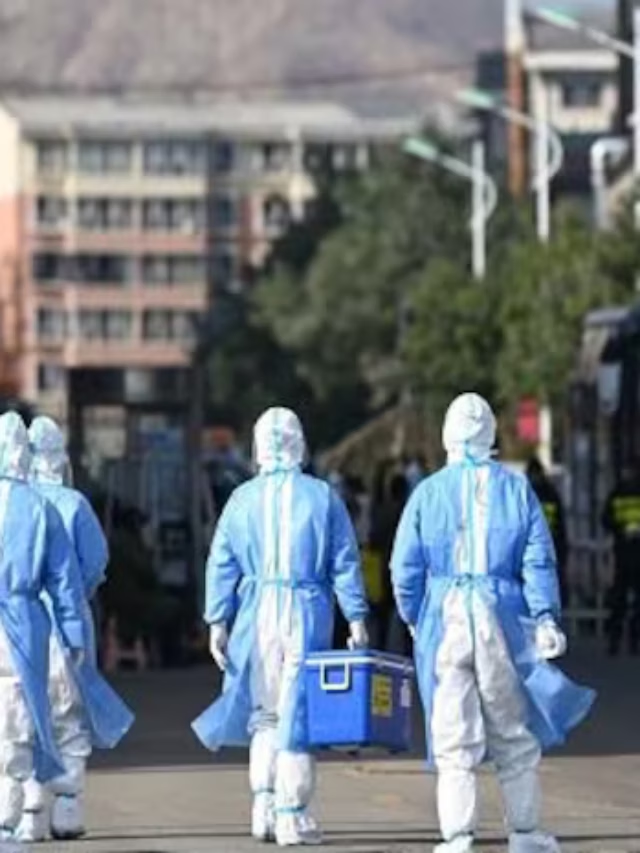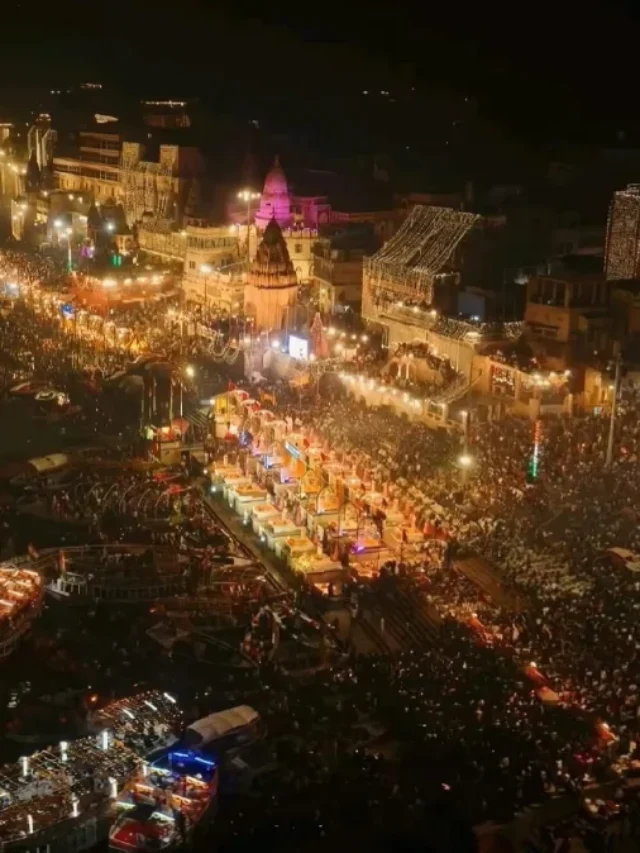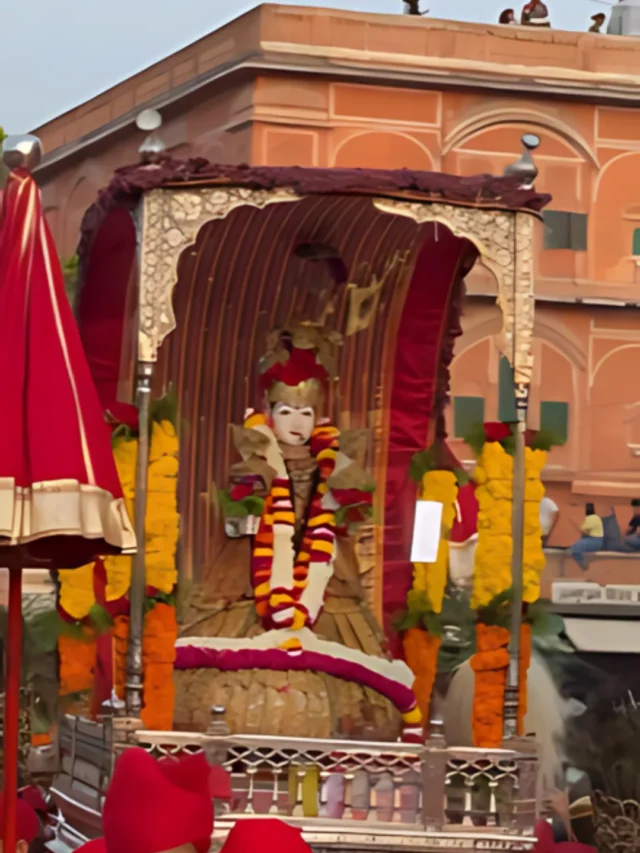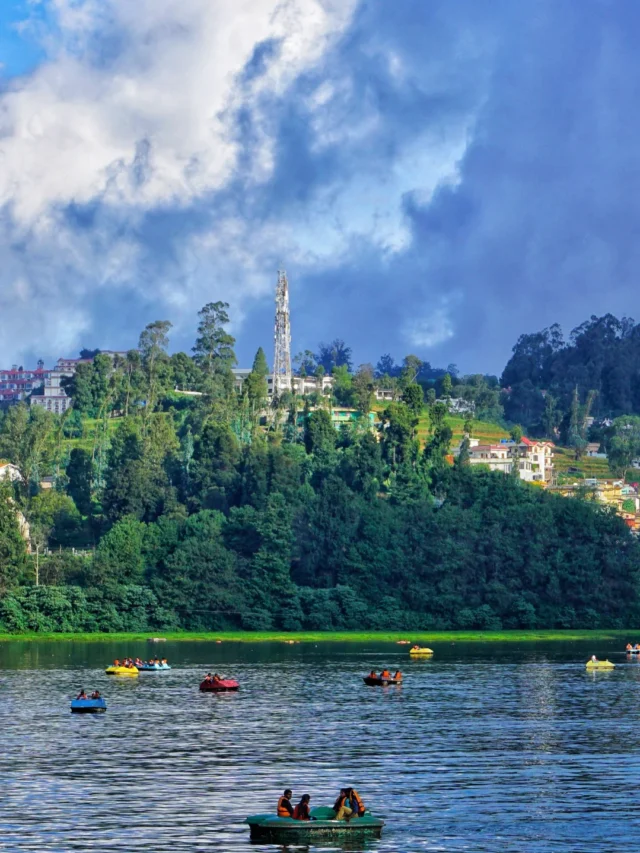Do you remember the story of Tenali Raman and King Sri Krishnadevaraya? If you do, Gandikota is here to make your nostalgia come true! The village of Gandikota is where the King ruled, and you can now visit it to witness the hidden gem of India—the Indian Grand Canyon!
Gandikota Village: Nothing Short of the Magnificence of Arizona
The Gandikota village is a small village in the Kadapa District of Andhra Pradesh. It is here that you will find the worthwhile gorge formations that are hauntingly similar to the Antelope Canyons of Arizona in the USA!
This quaint village sits on the banks of the Pennar River at the foothills of Erramala Hills and boasts a wide range of experiences to chase after. This small village is hidden from the eyes of the tourist crowd, allowing you to find peace here. If your gut resists the idea of flocks of travellers eating away at your personal space as you witness garbage littered around you instead of the beauty of the place you had in your mind, Gandikota is the perfect place for you. As the village is yet to be commercialised, it is lesser-known amongst those who visit Andhra Pradesh, keeping the noisy crowd at bay.
Apart from the breathtaking scenery, the region offers historical sites like the 13th-century Gandikota Fort, which was previously a stronghold for several kingdoms. The Fort features several remarkable buildings, such as temples, mosques, and granaries. Travellers from India typically visit this village because it offers a chance to see the region’s natural beauty and historical legacy. It is a unique and gorgeous location that has been likened to the American Grand Canyon.
It is known for its Grand Canyon-like gorges, but the village has much more to offer than just the naturally carved gorges. Find out all about Gandikota in just a scroll!
The Grand Canyon of India: Gandikota
Gandikota is correctly called the ‘Grand Canyon of India’ as it resembles the Antelope Canyons, and the Colorado River is compellingly analogous. The structures and natural carvings in the Belum Caves and the gorges around the Pennar River are so similar that you would feel like you’re in the US when visiting them. It is the only place in India with a gorge formation, and you must not miss out on seeing it!
The way the rocks are naturally cut and assembled is stunning. You can take a weekend trip from Bangalore to marvel at this beauty. And when you’re here, do not miss out on the many other experiences this village offers!
Dzukou Valley: Nagaland’s Hidden Gem will Sweep You Off Your Feet!: Gandikota: The Grand Canyon of IndiaHistory of Gandikota: Timelessness of the Hidden Gem
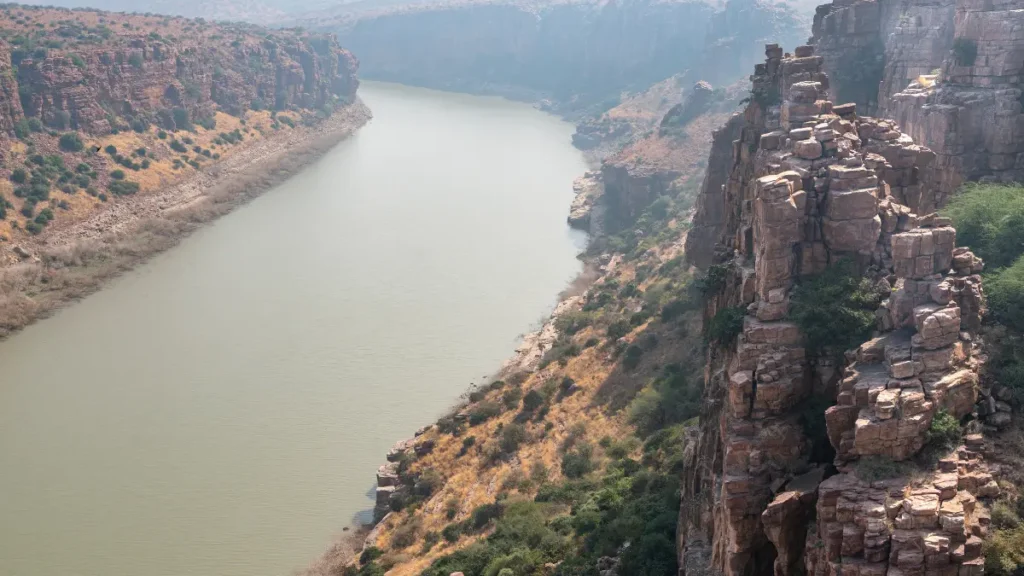
The village’s history dates back to the 13th century, ruled by the Kakatiya dynasty. The region started to become recognised as significant during this time, and the groundwork for Gandikota Fort was established. The Kakatiyas used this Fort, located atop a breathtaking canyon, as a symbol of might and strategic significance.
It was included in the Vijayanagara Empire as the Kakatiya dynasty declined. The region flourished during this time as the Vijayanagara emperors built the Fort and added monuments like mosques, grain warehouses, temples, and watchtowers. As the village developed into a crucial stronghold for the Vijayanagara Empire, its importance increased.
Following the fall of the Vijayanagara Empire, several Islamic dynasties, notably the Qutb Shahi dynasty as a component of the Golconda Sultanate, ruled over Gandikota. These dynasties proceeded to expand on the architectural heritage of their forebears, realising the strategic importance of the Fort for the British East India Company arrived and established itself in this village in the eighteenth century. The area was impacted by colonial power, and the Fort was protected as a fortress. Gandikota is a spot that embodies the past and present due to its unique combination of natural beauty and significant history.
What to See at the Grand Canyon of India: Gandikota
1. Gandikota Fort: Beauty in Ruins
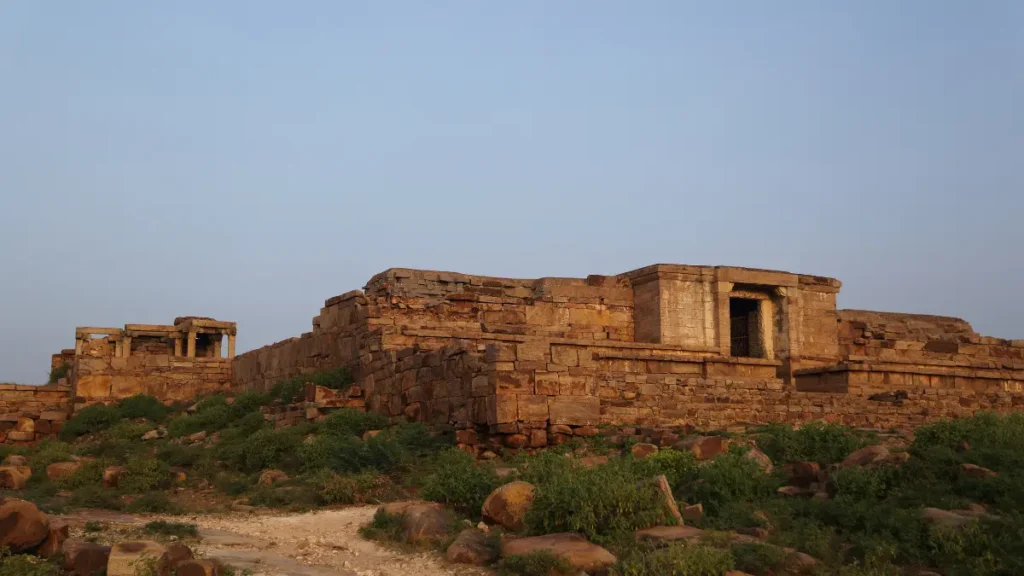
The enormous fortForte, constructed in the thirteenth century, is dispersed over kilometres. Built of red sandstone, the fortFort five miles of outer defensive walls to protect it, and also exquisite palaces with elaborate carvings and flowing springs that nourish the surrounding greenery. The ruins of a temple that was constructed in the same century and a mosque that was erected later are next to one another and provide a wonderful illustration of unity in diversity. Enjoy a stroll around the Fort’s wall, pay a visit to soak in the gentle river, or see the Fort’s transformation into a kaleidoscope of hues as twilight approaches. If you want to learn about the history of the Gandikota fort, which tells the narrative of an era long gone, a journey here is well worthwhile.
2. Belum Caves: Nature’s Sculpture
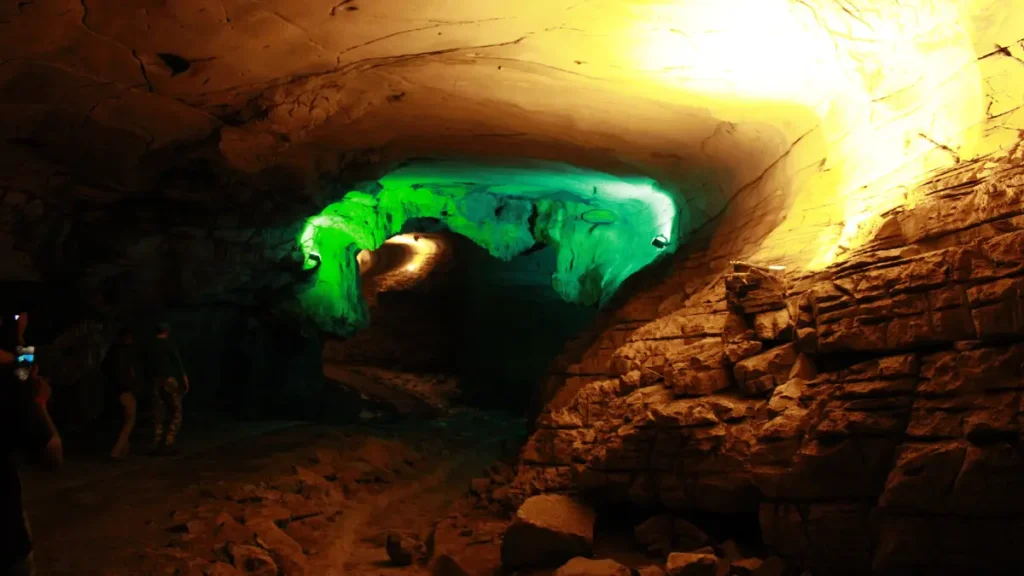
Photographs of Arizona’s Antelope Canyons must have captivated you for ages. What if India offers the same experience? The Indian counterpart of the Antelope Canyons called the Belum Caves, in addition to the Grand Canyon of India, offers the same experience. According to scientists who have lately investigated the region, Belum Caves is the second biggest cave system in India and has significant geological, archaeological, and architectural value. In truth, the stalactite and stalagmite formations within the cave contain abundant amounts of Quartz, according to scientists.
A forty-foot white Buddha statue is on a hillside directly outside the cave. The Belum Cave, which has some of the most remarkable stalactite and stalagmite formations you have ever seen, is located directly behind that. The 150-foot-deep Belum is a significant location for Buddhists.
3. Pennar Gorge Viewpoint: Breathtaking Vistas

You’ll know why this stunning stone gorge is dubbed the Grand Canyon of India as you watch the Pennar River meander serenely. The gorge is a work of beauty. This enormous gorge is a breathtaking collection of rocks, carved and piled most unusually as though they were put there by hand, much like the Grand Canyon in Arizona. Although scaling those dangerous rocks can be difficult, the breathtaking vistas you will encounter once you reach the top are well worth the effort. Your visit to the Gandikota Grand Canyon will be nothing short of spectacular if you sit atop the rocks and watch flocks of pelicans occasionally soar over the velvety green river as the sun sets in the background.
4. Jama Masjid: Pay Respect as You Relish Mughal History
Even though the mosque’s walls have become duller with age, visitors are nevertheless drawn in by its understated yet sophisticated Islamic design. Visitors to the masjid are met by a large multi-arched entrance, followed by the great prayer hall, where hundreds formerly gathered to worship heartily. The nearby Madhavaraya temple’s Gopuram is visible from the top of the entryway. They both stand side by side in perfect harmony and calm.
5. Raghunathaswamy Temple: Now an Idol-less Temple
The elaborate pillars, spacious halls, and ornate pathways of Raghunathaswamy Temple are well-known. Although the temple no longer has idols, many visitors are drawn in by the ancient artefacts.
6. Madhavaraya Temple: Build by Emperor Sri Krishnadevaraya

Another ancient temple inside the fortFort’sders is Madhavaraya Temple. Detailed carvings on its walls and pillars are a reason for its fame. It was constructed in honour of Lord Vishnu by Sri Krishnadevaraya of the Vijayanagara Kingdom. The temple is devoid of idols, the same as Raghunathaswamy Temple.
7. Rayalacheruvu Lake: Mystifying Like Magic
Beside the fortFortere is a beautiful lake that Emperor Sri Krishnadevaraya supposedly created with water from the Pennar River. When visiting Gandikota, one can sit on the lake’s edge and take in the canvas that is nature: layers upon layers of the serene Erramala hills in the background, serene water in front of them, beautiful vibrant colours painted in the sky, and a variety of native and migratory birds that occasionally peek out of the thickets. According to recent advances, the lake will now be utilised for irrigation in addition to being a popular tourist destination here, helping the village’s farmers.
Trek to the Grand Canyon of India: The Gandikota Trek
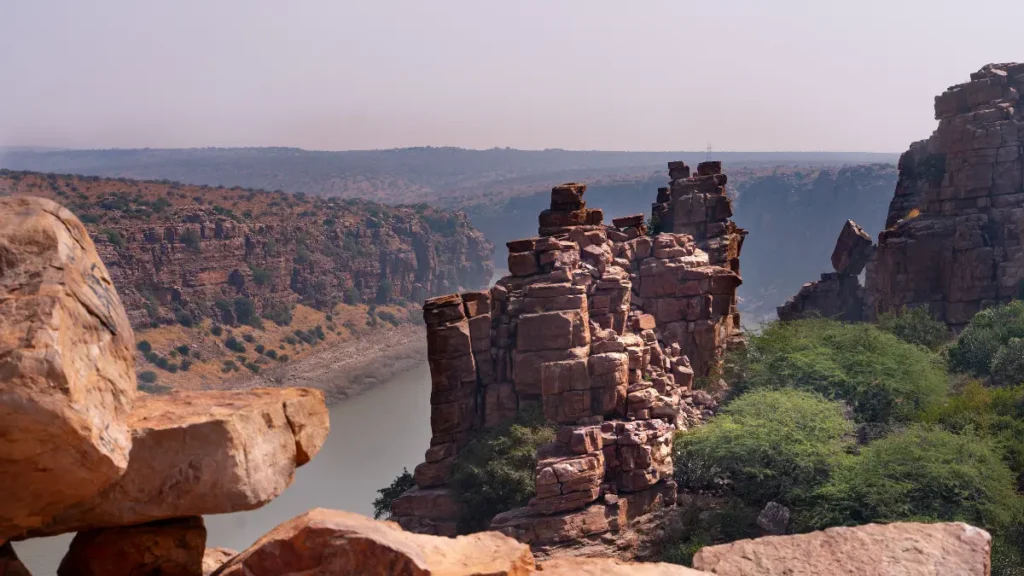
The Gandikota trek is a popular hike among travellers who visit this village. The trek takes one up to the Pennar Gorge Viewpoint and is an easy-to-moderate trek with an exciting thrill. It offers a glimpse of the United States’ renowned Grand Canyon. Not joking. The Pennar River rushes along enormous gorges through the Erramalai hills in Andhra Pradesh, much like the Colorado River in Arizona. Additionally, a fort is situated just at the gorge’s brink.
For those seeking a lengthier walk, there is an 18-kilometer trip to the Mylavaram dam. Although there is an asphalt road that leads directly to the dam, you have the option to avoid it while hiking.
The journey starts at the Gandikota Fort’s gate. Before starting your walk, explore the fort area. Proceed down the Fort’s innermost wall. You will soon come upon the remains of the Ranganayaka Swamy temple, followed by a mosque.
Although designated trails lead up to the temple, the way could be smoother afterwards. There are a million rocks in the region arranged in fascinating ways. There is a sign that says “Penna George” here. This path climbs the gorge’s brink. The straightforward route is quite easy to follow. These rocks offer intriguing paths for those who want to go on adventures. Numerous opportunities exist for bouldering and rock climbing. To see the sunrise, ascend to the edge and camp there for the night. The scene is surreal as the sun’s golden beams illuminate the river’s surface. Soon after dawn, begin your descent into the gorge.
Because of the sheer rocky edges of the Erramalai hills, the descent may be difficult. Below, River Pennar is surrounded by a verdant valley, which is an excellent camping location for those of you who don’t want to camp up above. The hike up to the Fort is around six hours. Careful planning of your itinerary is essential to get the most out of your quick walk. It’s best to start the walk in the late afternoon and set up a tent at the viewpoint for the night to witness both the sunrise and the sunset. Despite its rich history, this area exhibits neglect. It needs to be well-kept, and you may discover a lot of trash from the neighbouring villages.
Camping in the Grand Canyon of India: Gandikota Camping

Numerous businesses offer camping here in the guise of packages as more and more tourists arrive. Don’t stress yourself – you may disregard the packages the companies provide if you are a frequent traveller and have all the camping gear you need for a pleasant and fun camping trip. Pack necessary materials such as sleeping bags, tents, weather-appropriate clothes, cooking equipment, and personal belongings. Take care of the particular requirements for camping in Gandikota, including bringing bug repellents and suitable shoes for exploring the stony landscape.
Camping is possible at several locations close to this village. Each location has a distinct characteristic, such as being at the canyon’s edge where you can enjoy the most spectacular sunrise and sunsets and the river view, but remember that you have all of the necessary conveniences such as food, water, and bathrooms. Also, don’t forget to camp responsibly by not littering around the campsites.
Adventure Activities at Gandikota
Gandikota offers a range of adventure sports, such as rock climbing, kayaking, paragliding, rappelling, trekking, and hiking. Depending on accessibility, reservations for these activities can be made in advance or on-site with various organisations. Contacting them in advance will be cost-effective as compared to on-site bookings; however, bargaining is quite popular, and you can engage in that if you wish to.
The terrains of the canyons are ideal for rock climbing, while those who love kayaking and watersports can opt for doing them in the Pennar River. Trekking is, of course, a very popular sport here that you must do.
How to Reach Gandikota
Gandikota is not yet commercialised; hence, it isn’t directly connected to the major cities of Andhra Pradesh and nearby states, but one can surely reach here by public transport like buses and taxis.
Via Flights:

The nearest airport to Gandikota is around 90 kilometres from the FortFort Kadapa Airport; however, note that there are very few flights to and from Kadapa if you are going there from Hyderabad, Chennai, or Vijayawada. The other nearby airports are Tirupati International Airport (250 km approx.) and Kempegowda International Airport in Bangalore (210 km approx.); the latter has fewer airline choices.
Via Bus:
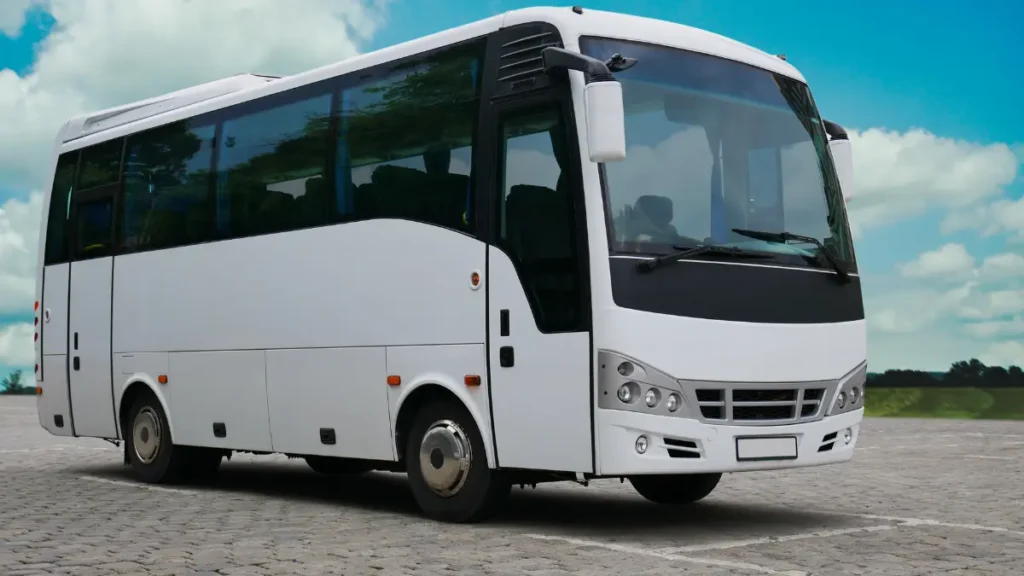
The best way to reach Gandikota is by car, but if you don’t have a car, the best way to go by road from Bangalore to Jammalamadagu would be to take a bus. Reservations for the trip may be made on the APSRTC website. The trip takes around six hours. Because Jammalamadagu is a tiny stop, buses may not be displayed on the KSRTC website.
Alternatively, go by bus from Bangalore to Anantapur, where you can get a rickshaw to the village for just 100 rupees. From there, take a local bus to Tadipatri.
Via Train

Kondapuram (10.7 km), Jammalamadagu (15 km), and Kadapa are the closest train stations. Many buses depart from here that go to Gandikota.
Conclusion
Gandikota is the perfect hidden of India. You will be mesmerised by its beauty when you walk along the Grand Canyon of India and take in its beauty. Pack your bags and take on this journey to uncover the veiled jewel of the country!



